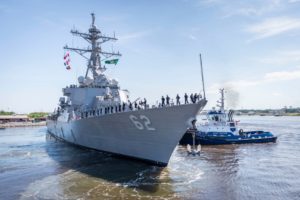
The Navy is both looking at plans to get wartime surge capability for protracted conflicts but at the same time is worried about limited repair capabilities. Program Executive Officer for ships Rear Adm. Tom Anderson said Navy acquisition chief James Geurts put a group together two years ago to have a discussion about wartime planning involving industrial base capabilities. “How prepared are we to go to the fight and what would we do and how do we get better prepared?…

 By
By 











